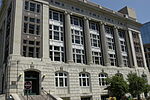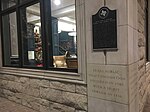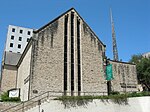Texas State University System

The Texas State University System (TSUS) was created in 1911 to oversee the state's normal schools. Since its creation it has broadened its focus and comprises institutions of many different scopes. The other systems of state universities are the Texas A&M System, the Texas Tech System, the University of Houston System, the University of North Texas System, and the University of Texas System. The system is unique in Texas because it is the only horizontal state university system in the state; the System does not have a flagship institution and considers all colleges and universities to be equal partners receiving the same level of support from the system. The TSUS is composed of four comprehensive universities offering baccalaureate and postgraduate degrees: Lamar University in Beaumont, Sam Houston State University in Huntsville, Sul Ross State University in Alpine, and Texas State University in San Marcos. The system also includes three two-year colleges offering associate degrees and professional certifications: Lamar Institute of Technology in Beaumont, Lamar State College Orange in Orange, and Lamar State College Port Arthur in Port Arthur.Angelo State University in San Angelo, Stephen F. Austin State University in Nacogdoches, Texas A&M University-Commerce in Commerce, Texas A&M University-Kingsville in Kingsville, West Texas A&M University in Canyon, and the University of North Texas in Denton were former members of the system. The Texas State University System saw its largest growth in 1995 when the Lamar University System with its four institutions was incorporated into the TSUS. The Texas State University System is headquartered in Austin. The system is governed by a nine-member Board of Regents appointed by the governor of Texas. The administration is headed by a Board-appointed chancellor based in Austin. The system owns and manages a 9,269-acre (3,751 ha) property encompassing much of the Christmas Mountains located adjacent to Big Bend National Park in southern Brewster County. The remote tract is regulated under strict conservation easements ensuring preservation in its natural state. The property serves as an open-air classroom for the system's member institutions and a laboratory for their research efforts.
Excerpt from the Wikipedia article Texas State University System (License: CC BY-SA 3.0, Authors, Images).Texas State University System
East 10th Street, Austin
Geographical coordinates (GPS) Address Nearby Places Show on map
Geographical coordinates (GPS)
| Latitude | Longitude |
|---|---|
| N 30.271555555556 ° | E -97.739527777778 ° |
Address
Thomas Jefferson Rusk Building
East 10th Street 200
78701 Austin
Texas, United States
Open on Google Maps










